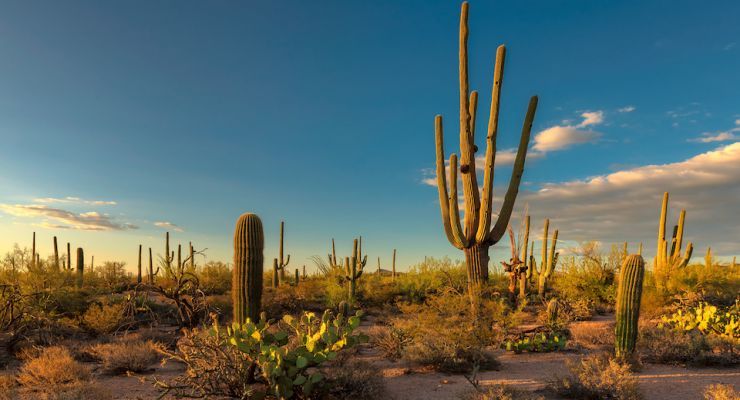There is just something so alluring about the atmosphere of the desert that causes many people to move to the lands of sweeping mountains, dusty open roads, and 0% humidity. If you live in the western part of the United States, you are probably used to hearing the term “it’s a dry heat” as you dart from one air-conditioned building to the next. Or if you’re preparing to make a transition to an arid climate, you may be wondering just what toll this lack of moisture has on your skin and body. Fortunately, living in a dry climate doesn’t have to be dangerous. Here are a few natural ways to combat an arid climate and ensure you stay moisturized even in the heart of the desert.
Get a humidifier
This is perhaps the single most essential step for returning critical moisture to your body and remaining hydrated. Purchase a large humidifier for your bedroom and keep it running whenever you sleep. A lot of humidifiers also support essential oil use so you can utilize the power of aromatherapy as well. This is especially crucial if you live in a hot area and use air conditioning as this already dries out your body and can be detrimental for your skin and lungs.
Lotion is your new best friend
You may have been able to get away without moisturizing in the humid jungle of Florida, but in the Mountains of Colorado or the red rocks of Arizona, you’re going to need to take your skincare game up a notch. Focus on natural lotion products that are specifically geared towards ultimate hydration. You’ll want to check for ingredients such as coconut oil, aloe vera, shea butter, or olive oil. Be sure that whatever lotion you use does not have alcohol derivatives (which act as drying agents), parabens, chemicals, or any other ingredients you don’t recognize.
You may want to try making your own lotion. Using one of the ingredients listed above and a few drops of essential oil, you have a totally customized, hydrating lotion that you can feel good about using. Rub moisturizer all over your body when your skin is still damp after your shower. This will help give your skin time to absorb and lock in the moisture.
Drink more water than you think you need
It is never a good idea to wait until you get thirsty to drink water. Being thirsty is actually an early sign of dehydration and means that your body is already crying out for water. When there is less water in the environment, you have to work twice as hard to replenish what you lose during workouts or normal day to day activities. It can also be hard to remember to drink water because you don’t sweat as much as you would in an area with high humidity levels. Always try to err on the side of caution and drink more water than you think you need. A good rule of thumb is half your body weight in ounces each day, but this will need to be adjusted according to activity levels and the amount of caffeine you consume.
Protect your skin
Generally speaking, arid climates have more days of full sun than places that experience frequent rain and cloud cover. This means that it is incredibly easy to get sunburn and other sun-related skin conditions when exposed to such bright UV rays on a constant basis. Be sure to protect your sun whenever you go outside. Wear breathable, lightweight clothing that covers your body and still keeps you cool.
It is a good idea to find a natural sunscreen that you love for daily use on your face, neck, and arms, as these are the most at-risk parts of your body for a sunburn. If you are going to be out in the bright sun for an extended period of time, be sure to reapply sunscreen and consider wearing a hat to protect your face.
Spend time outdoors in the early morning and evening
“Aird” doesn’t always mean “hot” but as summer approaches, it stands to reason that your arid climate is experiencing a significant heat increase. Since the sun is primarily what determines the heat levels in a dry environment, it is possible that the temperature could drop 10-20 degrees as the sun sets. Try to organize your outdoor activities when the sun is past its peak and is beginning to cool down. Avoid spending significant amounts of time outdoors between 10am-3pm as this is usually the hottest part of the day.
-Susan Patterson

